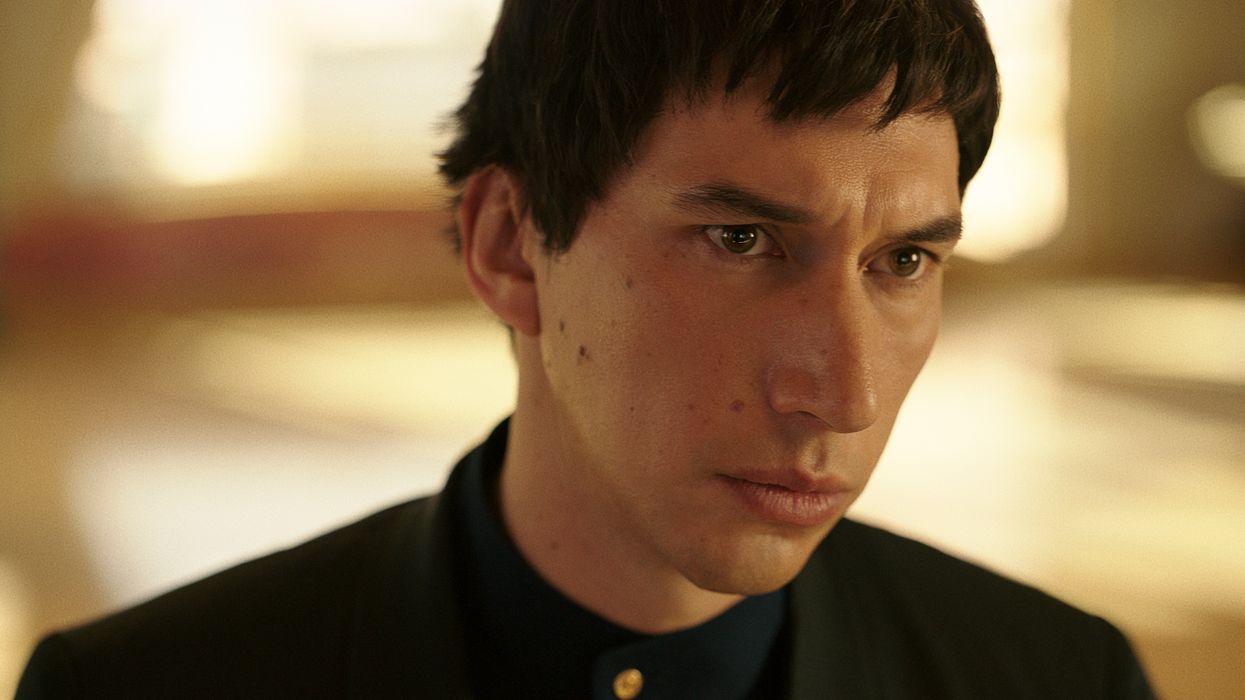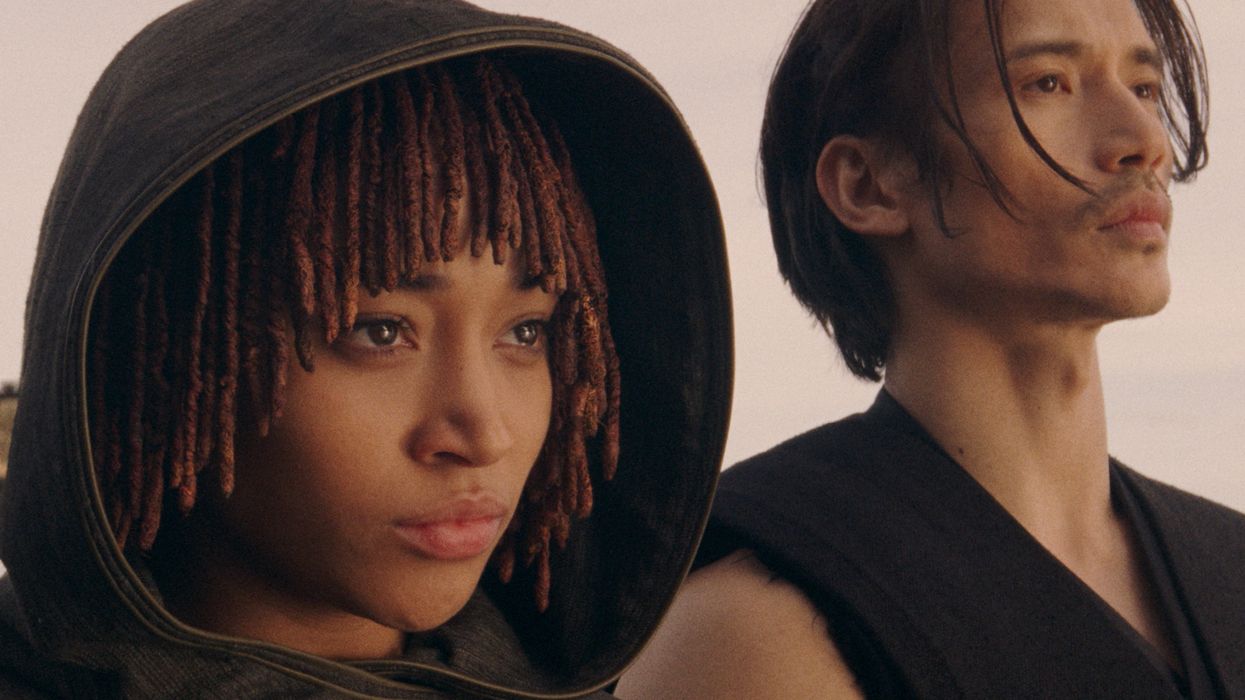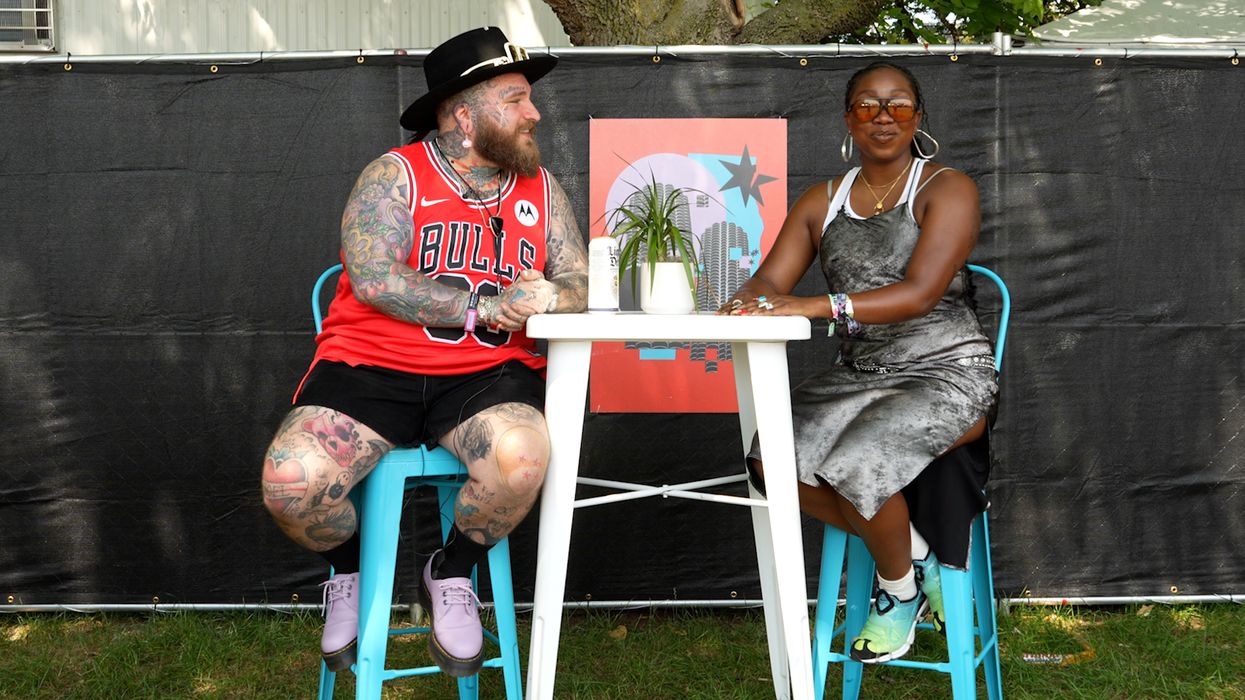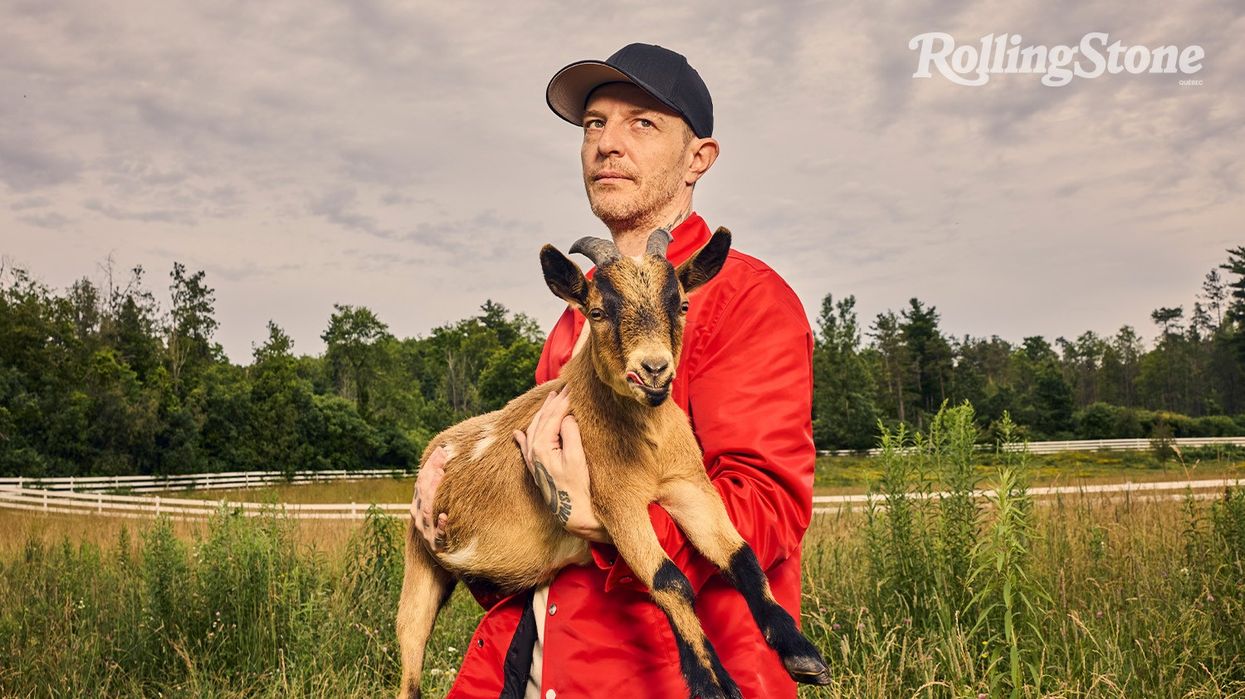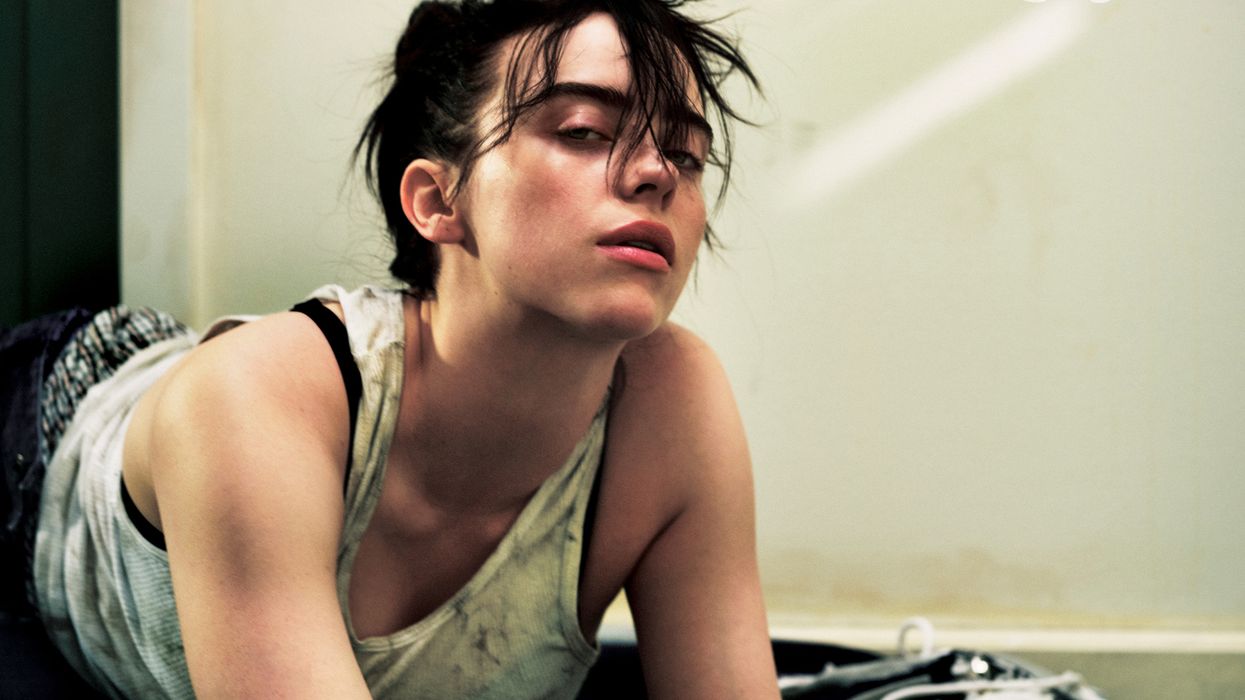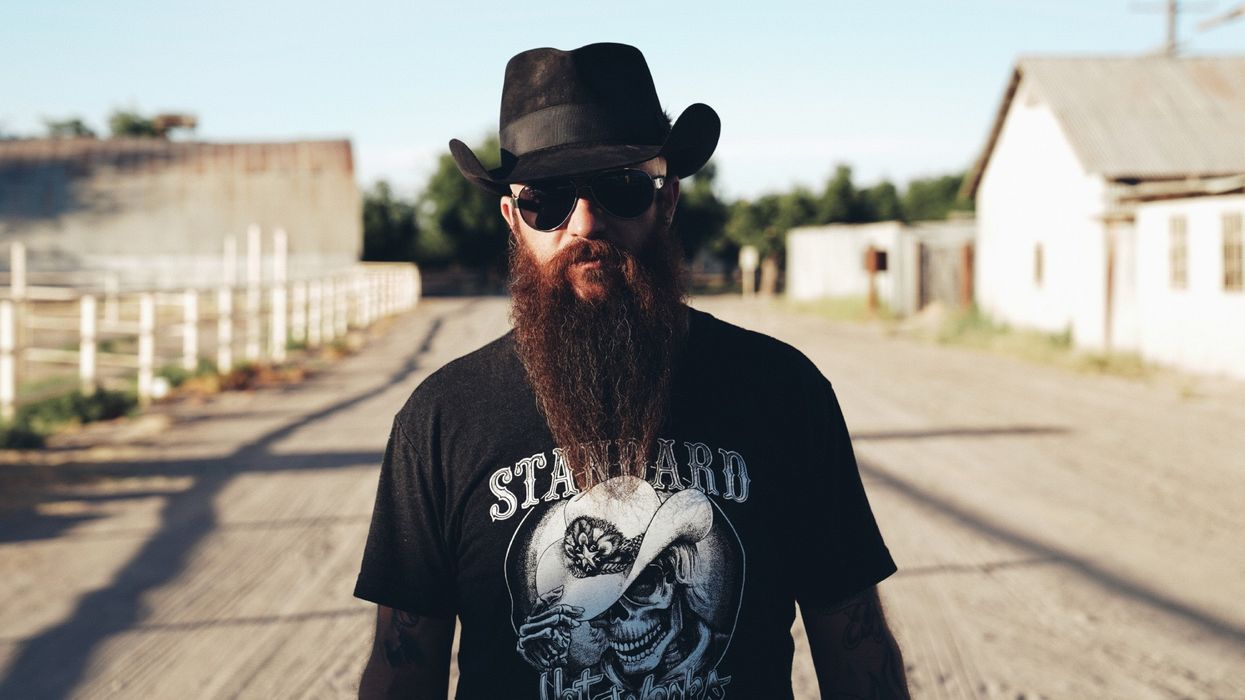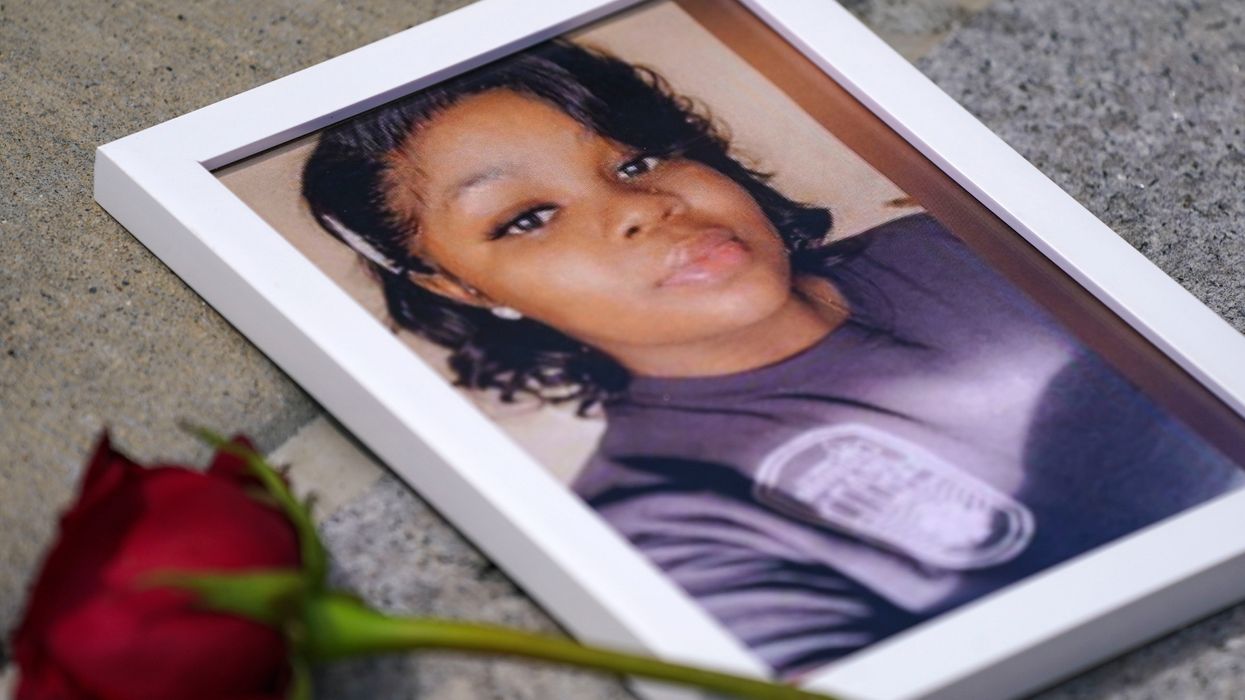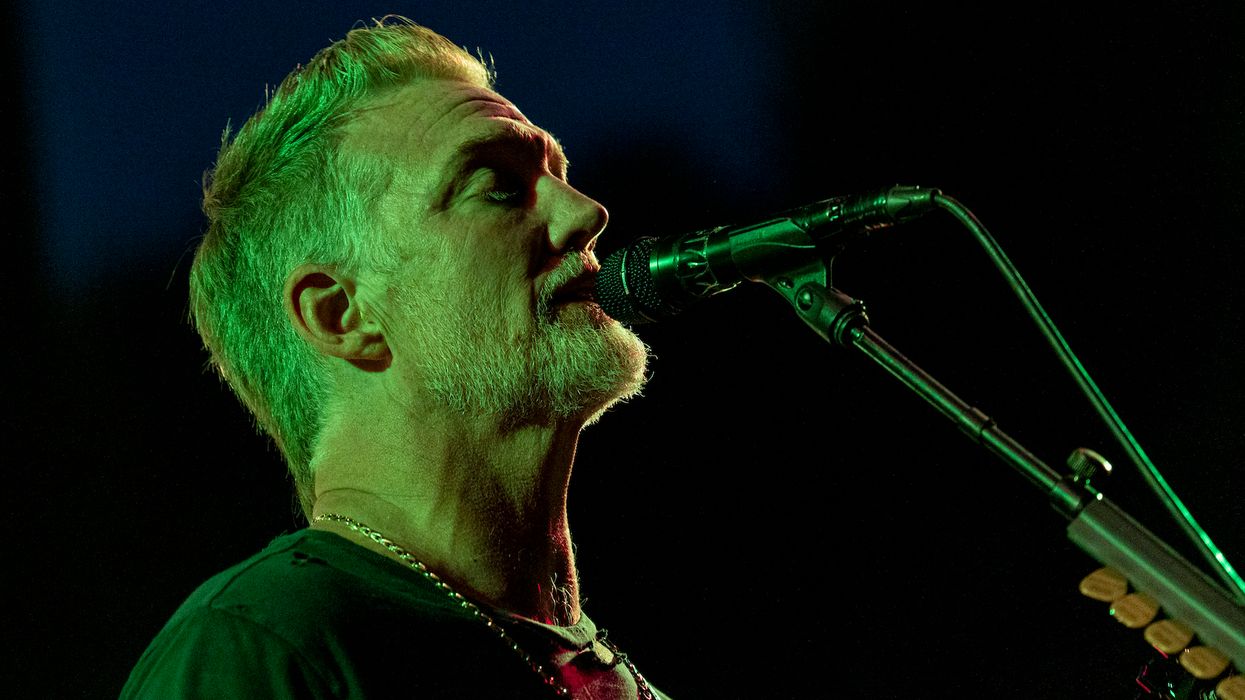WHEN JANE SCHOENBRUN was in high school, they spent hours devouring Buffy the Vampire Slayer. Schoenbrun watched Sarah Michelle Gellar play Buffy, who over the course of seven seasons, figures out who she really is — a powerful woman chosen to fight evil forces. And Schoenbrun imagined how they might fit into the show. They saw themselves in everyone, from the wacky pal Xander to the broody vampire Angel to Willow and Tara, a pair of witches in love — gender be damned.
“If you’d told me I could press a button and become a cool, goth, queer girl, I would have been like, ‘Give me the button. I want to press the button,’” Schoenbrun tells me. “But it would take me 20 years to understand that that was literally all that it took to be trans: that desire. I was always trans, but there was no one and no media at the time that told me that that was in any way possible.”
Now, at age 37, the trans and nonbinary writer-director is making movies that speak to who they were in high school — movies that explore the intricacies of identity through the lens of horror without pandering or oversimplifying. Schoenbrun’s latest film, I Saw the TV Glow, out this spring, is a kind of allegory for the trans experience that asks viewers “What’s more dangerous: Folding yourself into an identity that doesn’t fit — or burning it all down and reforming yourself from the ashes?”
Schoenbrun is helping to usher in a whole new wave of the horror genre, one where a previously underrepresented community can truly see themselves on the screen. Horror has long been seen as a largely male, cisgendered art form — at least on the surface. Think half-clad co-eds getting the ax while the virginal Final Girl makes it to the sequel.
But there have always been queer undertones in scary stories, explains Heather O. Petrocelli, author of Queer for Fear: Horror Film and the Queer Spectator. “Queerness and the horror genre are inexorably linked, starting with the Gothic literature of queer writers, such as Mary Shelley, Oscar Wilde, and Bram Stoker, and then furthered by gay horror directors like James Whale and F.W. Murnau,” Petrocelli says. Rather than the heteronormative leads, folks could sympathize with Frankenstein’s monster and his quest for identity — or the queer-coded Dracula.

This kind of closeted representation was less than ideal — as were later visions of non-cisgender identity in horror (see cross-dressing serial killers, like Buffalo Bill from Silence of the Lambs). The Nineties and early aughts ushered in more equal-opportunity bloodfests, with both sexy male and female victims, and recent years have seen increasingly better representation when it comes to all sexualities and identities. Now, Petrocelli says, we’re at a kind of final frontier: the trans experience.
Schoenbrun grew up in Westchester, New York, where parents raised their kids in the right neighborhood to become anything they wanted to be — as long as it was a doctor or lawyer or U.S. president. “I’m pretty sure they weren’t talking about becoming a girl who makes goth movies about how terrible late-stage-capitalist suburban adolescence was,” Schoenbrun quips. And although they had friends as a kid, Schoenbrun was terrified of dating; they knew they liked girls, but they didn’t want to flirt in the way that boys did. They wanted to become best friends with their crushes, listening to sad music and watching their favorite films.
Looking for a refuge, Schoenbrun told stories — whether it was making up episodes of favorite TV shows, playing Dungeons & Dragons, or filming zombie movies with their friends on a camcorder they got for Hanukkah. And through it all, they found solace in fiction: horror flicks like Evil Dead II, campy sci-fi like The X-Files, and, most of all, Buffy.
“My love of Buffy was a coping mechanism for not being able to find and express love in the real world,” they say.
When they started their filmmaking career, Schoenbrun made their mark with films that delved into identity and internet culture — notably the 2018 documentary A Self-Induced Hallucination, about Slender Man, a creepy pretend creature that kidnaps and terrorizes children. First appearing more than a decade ago, the skinny, faceless figure in a suit became an internet meme as people online wrote their own stories about him and his devious deeds. But in 2014, two preteen girls stabbed their friend and left her for dead as a real offering to the fictional being. (One of the girls was released in 2021, while the other remains in a mental institution.)
Schoenbrun became fascinated with Slender Man and his powerful lore. “Contributors would never break character, they would never admit that the experiences they were recounting were fictional,” they wrote in Filmmaker Magazine in 2018. “This allowed contributors and participants to immerse themselves, to live for a while in the fictional worlds they had invented together.” Schoenbrun later erased the documentary from Vimeo, not wanting to profit off of tragedy, but they were fascinated by how the internet blurred reality and fiction.
“I remember wishing that magic was real as a kid,” they tell me. “When you’re 12 and lonely, it becomes a coping mechanism to go looking for that in media and in fiction.” As a kid, they spent ample time on message boards themselves, trading theories and even manufacturing their own spoilers for their favorite shows — some of which spread through communities as truth. “It was never like, ‘I’m just a fan,’” they say. “It was like, ‘I am a fan and I am obsessed with this, but I also want to get under the hood and tinker around.’”
Their experience with the Slender Man documentary led, in part, to Schoenbrun’s breakout, 2021’s We’re All Going to the World’s Fair, an eerie look at suburban malaise through the eyes of an internet-obsessed teen who decides to take a nightmarish viral challenge. It premiered two years after Schoenbrun came out to themselves in 2019. The main character, Casey, is a lot like teenage Schoenbrun: Disenchanted by her mundane life, the girl aims to blur the lines between fiction and reality, creating her own creepy narrative. The tension arises, though, when an older man grows concerned about Casey, trying to “save” her from herself — against Casey’s wishes. The horror is in that grab at control, not the game.
“As Casey says in that film, ‘I love horror movies, and I thought it might be cool to try actually living in one,’” Schoenbrun says. “The porousness of what is and what is not real as a kid is more fluid. It’s easier to get lost in that magic.”
I Saw the TV Glow — which Schoenbrun wrote just a few months after changing their name and going on hormones — keeps to that same tradition. It follows two outcasts, Maddy (Brigette Lundy-Paine) and Owen (Justice Smith), as they become increasingly obsessed with a show called The Pink Opaque, which centers around a pair of magically bonded teens, Isabel (Helena Howard) and Tara (Lindsey Jordan, a.k.a. the musician Snail Mail). Stylistically, it’s a mashup of quirky Nineties programs like Are You Afraid of the Dark?, The Adventures of Pete & Pete, and, of course, Buffy. Skating a fine line between fantasy and delusion, the film sees Maddy going missing after becoming increasingly obsessed with the show — which is preferable to her crappy home life. When she shows up years later claiming that she’s been living inside The Pink Opaque as Tara, Owen is torn about whether or not he thinks she’s telling the truth — and if he wants to join her there. Does he really believe in that kind of mixing and melding of reality? Or will he live out the rest of his life in the suburbs?

For Schoenbrun, who sees themselves in both characters, Owen represents “not seeing the glow in you and all of the ways that we cope with that pre-transition — and that all of the ways that that coping is ultimately insufficient.” Maddy’s journey, then, was “absolutely me reflecting on the defiance necessary to begin my transition. I think of it as a prison-break movie,” they add. The film also features Limp Bizkit’s Fred Durst as Owen’s father, as well as cameos from Buffy’s Amber Benson, Pete & Pete stars Danny Tamberelli and Michael Marona, and Phoebe Bridgers.
Lundy-Paine also found kindred spirits in Owen and Maddy — especially the former character. Now 29, Lundy-Paine came out as nonbinary 10 years ago. While they came from a “very queer family” and didn’t face the same kind of prejudices that Schoenbrun saw in the post-Ellen Nineties, they’re very aware of what a rough process coming out can be. “I think about Owen all the time, especially when it comes to transition,” they tell me over Zoom; unlike Maddy, who lives in almost a constant state of rage, Lundy-Paine is Zen-calm. “It feels like it’s too late for him. I feel like that sometimes. Because transition is a process that has so many steps, and so much regression, and so much fear. The fear doesn’t go away. But I do believe that there’s always still time, and that it’s always a process.”
To prepare for the film, Schoenbrun lent Lundy-Paine their Buffy DVDs — a passing of the torch from millennial to Gen Z. At first, Lundy-Paine thought the show was “cringe,” much like how Owen sees The Pink Opaque when he rewatches it as an adult. When Lundy-Paine got to Season Six, however, which heavily inspired I Saw the TV Glow, they began to understand why Schoenbrun has every episode title memorized. That season features Buffy returning from the dead after her friends set out to rescue her from hell — only to discover she was in heaven all along. An episode from that season sticks with Schoenbrun today: “Normal Again,” which sees Buffy in a mental hospital, convinced her life thus far has been a delusion (thanks to some potent demon venom). “There are shades of that, for sure, in TV Glow,” Schoenbrun says. “The idea of entering fiction to cope with reality.”
Schoenbrun actually enters the fiction of her own film — at least symbolically — in the form of Tara and Isabel’s matching tattoos: a ghost with glasses that look a bit like Schoenbrun’s own distinctive frames. That image came to Schoenbrun in the shower one day. “I remember at the time I was thinking a lot about the person I had been — and the movie as this elegy for poor, repressed Jane,” Schoenbrun says. “The ghost with glasses was a symbol of this fragile figure who was not yet ready to step into life.” Now, though, with their second major film racking up rave reviews and audiences finding themselves in both Owen and Maddy, it seems Schoenbrun has finally taken those first steps. And they’ve finally become the person that they once dreamed of: that cool, queer goth making horror films — movies where other lost teens might be able to find a home.




